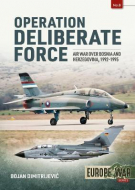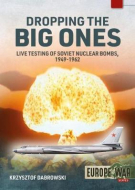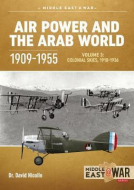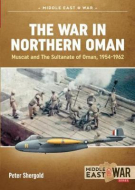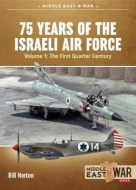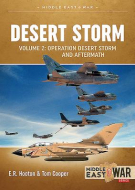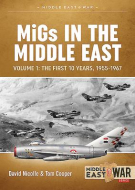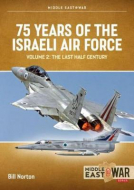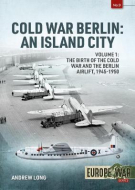
- Agriculture
- Architecture & Design
- Arts & Photography
- Biography
- Business
- Calendars and Diaries
- Childrens (All)
- Childrens (Illustrated)
- Childrens (Picture flats)
- Childrens (Te Reo)
- Classics
- Cooking, Food & Drink
- Craft & Hobbies
- Design (Art / Graphics)
- Design (Interiors)
- Education
- Fashion
- Fiction & Literature
- Fiction - Young Adult
- Gift Ideas
- Health & Wellbeing
- History
- Home & Garden
- Humour & Gift
- Instead of a Card Poems
- Military
- Music
- New Zealand
- NZ (History)
- NZ (Landscapes)
- NZ (Pictorial)
- Poetry
- Reference
- Religion & Faith
- Science & Nature
- Sport & Recreation
- Stationery
- Taschen : 40th Anniversary Edition
- Taschen : BA Basic Art
- Taschen : BU Bibliotheca Universalis
- Te Reo Māori
- Transport
- Travel
Helion & Company (181)
|
Operation Deliberate Force (Europe@War 8)
ISBN: 9781913336301 Author: Aleksandar Radic Publisher: Helion & Company During the early 1990s, a series of savage wars was fought in the former Socialist Federal Republic of Jugoslavia (SFRJ). The third of the conflicts in question... During the early 1990s, a series of savage wars was fought in the former Socialist Federal Republic of Jugoslavia (SFRJ). The third of the conflicts in question, the war in Bosnia, was in its third year as of 1995. Already internationalized by multiple domestic and foreign actors, it was about to reach its peak and result in a major showdown. The war in Bosnia was foremost fought between Bosnian Serbs, supported by Belgrade; Bosnian Croats, supported by Zagreb; and Bosnian Muslims. It was characterized by widespread atrocities against civilians, which prompted hundreds of thousands to flee. The United Nations' attempts at finding a negotiated settlement proved fruitless, despite the deployment of a sizable contingent of peacekeepers. On the contrary, the Bosnian Muslims began receiving ever larger amounts of clandestine support from Iran, and also from Saudi Arabia and several other allied countries in the Middle East, while the USA began supporting the Croats. Upon constantly increasing popular pressure, the United Nations requested the North Atlantic Treaty Organization (NATO) to intervene. Bind: paperback Pages: 96 Dimensions: 210 x 297 mm Publication Date: 28-03-2021 |
$49.99 |
|
|
Tsar Bomba (Europe@War 10)
ISBN: 9781913336318 Author: Krzysztof Dabrowski Publisher: Helion & Company On 30 October 1961, the Union of Soviet Socialist Republics (USSR/Soviet Union) conducted a live test of the most powerful nuclear weapon ever created. Codename... On 30 October 1961, the Union of Soviet Socialist Republics (USSR/Soviet Union) conducted a live test of the most powerful nuclear weapon ever created. Codenamed 'Ivan', and known in the West as the 'Tsar Bomba', the RDS-202 hydrogen bomb was detonated at the Sukhoy Nos cape of Severny Island, Novaya Zemla archipelago, in the Barents Sea. The Tsar Bomba unleashed about 58 megatons of TNT, creating an 8-kilometer/5-mile-wide fireball and then a mushroom that peaked at an altitude of 95 kilometers (59 miles). The shockwave created by the RDS-202 eradicated a village 55 kilometers (34 miles) from ground zero, caused widespread damage to nature to a radius of dozens of kilometers further away, and created a heat wave felt as far as 270 kilometers (170 miles) distant. And still, this was just one of 45 tests of nuclear weapons conducted in the USSR in October 1961 alone. Between 1949 and 1962, the Soviets set off 214 nuclear bombs in the open air. Dozens of these were released from aircraft operated by specialized test units. Equipped with the full range of bombers - from the Tupolev Tu-4, Tupolev Tu-16, to the gigantic Tu-95 - the units in question were staffed by men colloquially known as the 'deaf-and-dumb' people sworn to utmost secrecy, living and serving in isolation from the rest of the world. Frequently operating at the edge of the envelope of their specially modified machines while test-releasing weapons with unimaginable destructive potential, several of them only narrowly avoided catastrophe. Richly illustrated with authentic photographs and custom-drawn color profiles, Tsar Bomba is the story of the aircrews involved and their aircraft, all of which were carefully hidden not only by the Iron Curtain, but by a thick veil of secrecy for more than half a century. Bind: paperback Pages: 72 Dimensions: 210 x 297 mm Publication Date: 05-04-2021 |
$49.99 |
|
|
Air Power and the Arab World 1909-1955: Volume 3 (Middle East@War 30)
ISBN: 9781913336325 Author: David Nicolle Publisher: Helion & Company Much of the Arab World remains ravaged by war or threatened by war. Meanwhile, the decades old Arab-Israeli conflict remains fundamentally unresolved. Consequen... Much of the Arab World remains ravaged by war or threatened by war. Meanwhile, the decades old Arab-Israeli conflict remains fundamentally unresolved. Consequently, even the Arab air forces and other Arab armed forces remain either at war or on a virtual war footing, or at least in a state of continuous vigilance. The earliest of the Arab air forces to be established trace their histories back to the 1920s and 30s when the overwhelming majority of Arab countries, and an even larger majority of the Arabic-speaking people, were ruled or dominated by four European powers. Based on decades of consistent research and newly available sources in both Arabic and various European languages, richly illustrated with a wide range of authentic photography, Volume 3 of the Air Power and the Arab World, 1909-1955 mini-series continues the story of the men and machines of the first half century of military aviation in the Arab World. It describes the role, organizational structure and activities of the air forces of Britain, France, Italy, and Spain which were sent to the Arab countries. It also looks at the early years of two neighboring air forces, those of the Persian (Iranian) and Ethiopian Empires whose early emergence was viewed jealousy in some Arab capitals. Volume 3 continues this story by describing operations of the British, French, Italian and Spanish air forces in the Arab world after the First World War, but also the emergence of the first Arab air forces in the shadow of the substantial European air force units stationed in that area. Bind: paperback Pages: 96 Dimensions: 210 x 297 mm Publication Date: 05-02-2021 |
$49.99 |
|
|
The War in Northern Oman (Middle East@War 34)
ISBN: 9781913336332 Author: Peter Shergold Publisher: Helion & Company The war fought in northern Oman from 1954 until the mid-1960s is almost completely forgotten. Even amongst contemporary military historians, it is considered le... The war fought in northern Oman from 1954 until the mid-1960s is almost completely forgotten. Even amongst contemporary military historians, it is considered less frequently than the subsequent - and widely published - Dhofar War. Though 'small', it was a conflict of crucial importance for the nation on the southeastern side of the Arab Peninsula. While usually thought to have been fought - and won - exclusively by special forces, capacity building, and training of native forces, a closer look reveals an entirely different picture. The victory and lasting peace were actually secured by a conventional military campaign dominated by offensive operations, followed by an entirely separate civilian development program. The role of special forces was overemphasized - not only in regards of their relative number of operations, but also in regards of their impact - while the insurgency was suppressed by punitive means, and the capacity building remained limited during the war. It was only once offensive operations were completed that the development program contributed to the lasting peace. This peace, in turn, would have been impossible without the conventional military campaign. As such, this 'small' conflict proved of crucial importance for the nation on the southeastern side of the Arab Peninsula. The War in Northern Oman provides a detailed account of the political dynamics which led to the eruption of violence, but foremost examines the use of force, the wider conventional military campaign, operations by special forces, military capacity building, and the application of soft power factors for civilian capacity building. Moreover, it emphasizes the process of reconciliation and international engagement. Based on extensive research in official documentation, and including numerous personal testimonies, this volume - richly illustrated by photographs provided by veterans - provides exclusive coverage of one of very few wars in which a grassroots insurgency suffered a clear-cut military defeat. Bind: paperback Pages: 64 Dimensions: 210 x 297 mm Publication Date: 15-07-2021 |
$49.99 |
|
|
75 Years of the Israeli Air Force: Volume 1 (Middle East@War 28)
ISBN: 9781913336349 Author: Bill Norton Publisher: Helion & Company In May 2023, Israel will be celebrating the 75th anniversary of its founding as a state, and also the 75th anniversary of the establishment of its air force. T... In May 2023, Israel will be celebrating the 75th anniversary of its founding as a state, and also the 75th anniversary of the establishment of its air force. The maturation of what was once the Israel Defense Force/Air Force (IDF/AF), and since 2005 is the Israeli Air-Space Force (IASF), is a fascinating study of a military force working to meet shifting obligations under multiple impediments while being repeatedly tested in combat. Many factors over the seven and a half decades shaped its air fighting capability, not the least being the demands of the evolving battlefield, uncertain funding, available weapons, and quality of personnel. Tactics and doctrine were, in turn, shaped by government policies, international pressures, and confronting adversaries likewise evolving. When the trials in war, or combat short of war came, success was a measure of its weapons' suitability, relevancy of training, and experience of personnel. This volume documents this evolution of the Israeli air force throughout its history by examination of all of these factors. It stands apart from many other books in performing this examination in a more dispassionate and critical manner, without the common hyperbole. A great deal of space is devoted to description of constant shifts in its equipment - especially aircraft and other weapons - and its organizational structure over time. A summary of the geopolitical milieu in which Israel and its military institutions have dwelled over the 75 years helps to explain the material acquisition and tactical choices while placing in context the operations in which they were employed. Written at a time of historical challenges for Israeli Air and Space Force, and the Israel Defense Forces as a whole, this is an exclusive, highly informative and richly illustrated source of reference and is the first volume in a three-volume mini-series. Bind: paperback Pages: 96 Dimensions: 210 x 297 mm Publication Date: 23-11-2020 |
$55.00 |
|
|
Operation Desert Storm: Volume 2 (Middle East@War 31)
ISBN: 9781913336356 Authors: Tom Cooper, Ted Hooton Publisher: Helion & Company Early in the morning of 2 August 1990, aircraft of the Iraqi Air Force bombed Kuwaiti air bases, and then the Iraqi Republican Guards stormed into the country. ... Early in the morning of 2 August 1990, aircraft of the Iraqi Air Force bombed Kuwaiti air bases, and then the Iraqi Republican Guards stormed into the country. Thus began what would be called the 'Gulf War' - or the 'II Gulf War' or 'II Persian Gulf War' - fought between January and March 1991. Although encountering some problems, the Iraqi forces occupied Kuwait in a matter of a few days. However, when President Saddam Hussein of Iraq unleashed his military upon Kuwait, little did he know what kind of reaction he would provoke from the Western superpowers, and what kind of devastation his country would suffer in return. Concerned about the possibility of Iraq continuing its advance into Saudi Arabia, the USA - in coordination with Great Britain, France, and several local allies - reacted by deploying large contingents of their air, land and naval forces to the Middle East. Months of fruitless negotiations and the continuous military buildup - Operation Desert Shield - followed, as tensions continued to increase. Determined to retain Kuwait, and despite multiple warnings from his own generals, Saddam Hussein rejected all demands to withdraw. The USA and its allies, 'the Coalition', were equally as determined to drive out the invader and restore Kuwaiti independence. Gradually, they agreed this would have to be by force. Following an authorization from the United Nations, the Coalition launched the Operation Desert Storm, on 17 January 1991, opening one of the most intensive air campaigns in history. The last conventional war of the 20th Century saw the large, but essentially traditional, Iraqi Army overwhelmed by forces trained and equipped to exploit the latest technologies. Bind: paperback Pages: 72 Dimensions: 210 x 297 mm Publication Date: 17-02-2021 |
$49.99 |
|
|
MiGs in the Middle East: Volume 1 (Middle East@War 33)
ISBN: 9781913336363 Authors: David Nicolle, Tom Cooper Publisher: Helion & Company Egypt and Czechoslovakia signed the so-called 'Czechoslovak Arms Deal', thus initiating a unique era of close cooperation between major Arab military powers, th... Egypt and Czechoslovakia signed the so-called 'Czechoslovak Arms Deal', thus initiating a unique era of close cooperation between major Arab military powers, the former Union of the Soviet Socialist Republics (USSR) and its allies. During the first decade of this period, the air force of Egypt, followed by those of (in chronological order) Syria, Iraq, Morocco and Algeria, were all equipped with dozens and then hundreds of Soviet-made fighters designed by the Mikoyan I Gurevich Design Bureau - the same swept-wing jets that took the Western powers by surprise during the Korean War. While the first generation of MiG jet fighter - the MiG-15 - saw only a relatively brief service in Egypt, its more efficient and upgraded successor, the MiG-17F, entered service in bigger numbers, and then formed the backbone of additional air forces around the Middle East. The MiG-17PF became the first radar-equipped combat aircraft while the MiG-19 became the first supersonic fighter flown by the air forces of Egypt and Iraq, in the period 1958-1963. In Morocco and Algeria, the MiG-17 was the first and the only jet fighter in service during the first half of the 1960s. Unsurprisingly, MiG-15s, MiG-17s and MiG-19s thus served with many different units and - especially in Egypt and Algeria, and also in Syria - wore a wide range of very different, and often very colorful unit insignia and other markings. They were also flown by many pilots who subsequently played crucial roles in the future of their nations. Based on original documentation and extensive interviews with veterans, and richly illustrated, MiGs in the Middle East, Volume 1 is a unique source of reference on the operational history of MiG-15, MiG-17, and MiG-19 fighter jets in Algeria, Egypt, Iraq, Morocco, and Syria from 1955 until 1956. This is the first volume in a mini-series. Bind: paperback Pages: 72 Dimensions: 210 x 297 mm Publication Date: 28-04-2021 |
$49.99 |
|
|
The Paulista War: Volume 2 (Latin America@War 24)
ISBN: 9781913336370 Author: Javier Garcia de Gabiola Publisher: Helion & Company The year 1932 was not only the year in which the famous carnival of Rio de Janeiro was organized for the first time, or the giant statue of the Christ the Redee... The year 1932 was not only the year in which the famous carnival of Rio de Janeiro was organized for the first time, or the giant statue of the Christ the Redeemer was placed on top of the Corcovado mountain ridge: it was also the year of the last civilian war fought in Brazil. On 9 July 1932, about 35,000 men from the federal states of Sao Paulo and Mato Grosso do Sul rose in arms against the dictatorship of Getúlio Vargas, demanding the return to constitutionality and democracy. This became known as the Constitutionalist movement and its members became known as the Paulistas. The Brazilian government reacted with brute force: it deployed over 100,000 troops supported by heavy artillery and combat aircraft. The result was the biggest war ever fought in Brazil: the first ever campaign to see strategic aerial bombardment conducted in all of the Americas, the first aircraft shot down in air combats, and the first to see night bombing operations. Following three months of bitter fighting - which often degenerated into trench warfare - the Paulistas were defeated. Indeed, the end of this conflict brought an end to a period of successive civil wars fought in Brazil since 1889. Paulista War - the first authoritative account of this conflict ever published in the English language - provides a detailed account of both aerial and ground combat operations. It is lavishly illustrated with a collection of authentic photographs and exclusive color profiles, and as such is an indispensable source of reference about this crucial moment in the history of the largest country in South America. Volume 2 of Paulista War focuses on the ground campaign on the southern front of this conflict. Bind: paperback Pages: 102 Dimensions: 210 x 297 mm Publication Date: 10-08-2021 |
$55.00 |
|
|
75 Years of the Israeli Air Force: Volume 2 (Middle East@War 32)
ISBN: 9781914059001 Author: Bill Norton Publisher: Helion & Company In May 2023, Israel will be celebrating the 75th anniversary of its founding as a state, and also the 75th anniversary of the establishment of its air force. T... In May 2023, Israel will be celebrating the 75th anniversary of its founding as a state, and also the 75th anniversary of the establishment of its air force. The maturation of what was once the Israel Defense Force/Air Force (IDF/AF), and since 2005 is the Israeli Air-Space Force (IASF), is a fascinating study of a military force working to meet shifting obligations under multiple impediments while being repeatedly tested in combat. Many factors over the seven and a half decades shaped its air fighting capability, not the least being the demands of the evolving battlefield, uncertain funding, available weapons, and quality of personnel. Tactics and doctrine were, in turn, shaped by government policies, international pressures, and confronting adversaries likewise evolving. When the trials in war, or combat short of war came, success was a measure of its weapons' suitability, relevancy of training, and experience of personnel. Volume 2 documents the evolution of the Israeli air force from the aftermath of the 1973 war, through the events in Lebanon and up to the present day. It stands apart from many other books in performing this examination in a more dispassionate and critical manner, without the common hyperbole. A great deal of space is devoted to description of constant shifts in its equipment - especially aircraft and other weapons - and its organizational structure over time. A summary of the geopolitical milieu in which Israel and its military institutions have dwelled over the 75 years helps to explain the material acquisition and tactical choices while placing in context the operations in which they were employed... Written at a time of historical challenges for Israeli Air and Space Force, and the Israel Defense Forces as a whole, this is an exclusive, highly informative and richly illustrated source of reference. Bind: paperback Pages: 96 Dimensions: 210 x 297 mm Publication Date: 28-03-2021 |
$55.00 |
|
|
Cold War Berlin: An Island City: Volume 1 (Europe@War 9)
ISBN: 9781914059032 Author: Andrew Long Publisher: Helion & Company At the end of the Second World War, the city of Berlin was located 100 miles (160 km) inside the Soviet Occupation Zone of Germany. The Western Allies insisted ... At the end of the Second World War, the city of Berlin was located 100 miles (160 km) inside the Soviet Occupation Zone of Germany. The Western Allies insisted on keeping part of the city for themselves, and so it was divided into four sectors, mimicking the rest of Germany. Stalin needed to persuade the British, French and Americans to leave so that there would be nothing in the way of him completing the strategic buffer of territory reaching from the Baltic Sea to the Adriatic, which Churchill would later christen the 'Iron Curtain'. Cold War Berlin, an Island City is the story of how Stalin imposed his iron will over eastern Germany, and how he tried to squeeze his former allies out by cutting off their lines of supply and blockading the city. It examines the logistical miracle of the Berlin Airlift, which fed and heated a city of over two million people for almost eleven months. It is a story of alliances forged in the uncertainty of conflict, based on common interests and pragmatic convenience, alliances that would shape the twentieth century but would be betrayed for strategic or political reasons. It is also the tale of how competing ideologies came face to face in the city of Berlin and the new "Cold War" that would come to dominate the second half of the 20th century was created out of the embers of the Second World War. The book is richly illustrated with photos, numerous maps and color profiles and is the first in a mini-series by this author for Helion's Europe@War series on Cold War Berlin. Bind: paperback Pages: 96 Dimensions: 210 x 297 mm Publication Date: 28-03-2021 |
$49.99 |


